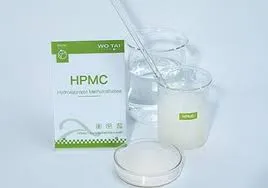
Sep . 07, 2024 07:36 Back to list
Redispersible Polymer Powder - High Performance Additives for Construction
Redispersible Polymer Powder An Essential Component for Modern Construction Materials
Redispersible polymer powders (RDPs) have gained significant attention in the construction industry for their ability to enhance the performance of various materials. These fine powders are derived from emulsion polymers and, upon contact with water, can be re-dispersed to form a stable aqueous dispersion. This unique property makes them indispensable in formulating adhesives, mortar, and other building products.
One of the primary advantages of RDPs is their ability to improve the adhesion and bonding strength of construction materials. When added to cement-based systems, RDPs create a network that enhances the interaction between the polymer and the substrate, resulting in stronger bonds. This is particularly important in applications such as tile adhesive and leveling compounds, where a robust grip is crucial for ensuring the longevity and durability of installations.
In addition to enhanced adhesion, RDPs contribute to improved flexibility and deformability of materials. Traditional cement mixtures tend to become brittle, which can lead to cracking under stress or due to temperature fluctuations. The incorporation of redispersible polymer powders increases the tensile strength and elongation of the compounds, providing them with the ability to withstand mechanical stress without failure. This flexibility makes RDP-modified mortars ideal for applications in dynamic environments, such as in regions susceptible to earthquakes or heavy foot traffic.
redispersible polymer powder

Another noteworthy benefit of using RDPs is their impact on the water resistance of construction materials. RDPs create a hydrophobic layer within the mixture, which helps to prevent water penetration and reduces the risk of damage caused by moisture. This characteristic is especially advantageous for exterior applications, such as facades and balconies, where exposure to the elements is a constant concern.
Moreover, incorporating redispersible polymer powders can also influence the workability of the material. The enhanced fluidity and ease of application they provide make it simpler for construction professionals to achieve desired textures and finishes. Users report that mortars containing RDPs exhibit improved spreadability, allowing for smoother applications and better overall aesthetics.
The versatility of RDPs is further evidenced by their compatibility with various raw materials. They can be seamlessly integrated into a wide range of formulations, including those focused on sustainability. As the construction industry leans towards eco-friendly solutions, RDPs offer an efficient way to reduce the amount of binders used while still maintaining high-performance standards.
In conclusion, redispersible polymer powders are a vital component in advancing the quality and functionality of modern construction materials. Their ability to improve adhesion, flexibility, workability, and water resistance makes them an essential addition to a wide array of applications, ensuring that structures are built to last. As the industry continues to innovate, the role of RDPs will undoubtedly expand, paving the way for even more resilient and efficient building solutions.
-
Versatile Hpmc Uses in Different Industries
NewsJun.19,2025
-
Redispersible Powder's Role in Enhancing Durability of Construction Products
NewsJun.19,2025
-
Hydroxyethyl Cellulose Applications Driving Green Industrial Processes
NewsJun.19,2025
-
Exploring Different Redispersible Polymer Powder
NewsJun.19,2025
-
Choosing the Right Mortar Bonding Agent
NewsJun.19,2025
-
Applications and Significance of China Hpmc in Modern Industries
NewsJun.19,2025







